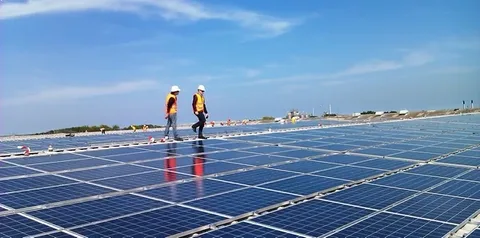As businesses increasingly seek sustainable energy solutions, commercial solar systems have become a popular choice for reducing energy costs and minimizing carbon footprints. Understanding the Step-by-Step Installation Process of Commercial Solar Systems is crucial for companies looking to adopt solar energy efficiently and effectively. This article breaks down the installation process to help business owners and facility managers navigate the transition smoothly.
1. Initial Assessment and Site Evaluation
The first stage in the Step-by-Step Installation Process of Commercial Solar Systems involves a comprehensive site assessment. Solar experts analyze the building’s roof space, structural integrity, and sunlight exposure. This evaluation determines the feasibility of installing solar panels and estimates the system size needed to meet the business’s energy demands.
2. Designing the Solar System
Once the site assessment is complete, the design phase begins. Engineers customize the system layout, selecting the appropriate solar panels, inverters, and mounting equipment. This step ensures that the system will operate at maximum efficiency and comply with local regulations and safety standards.
3. Obtaining Permits and Approvals
Before installation can commence, necessary permits and approvals must be secured from local authorities and utility companies. Navigating this bureaucratic process can be complex but is an essential part of the Step-by-Step Installation Process of Commercial Solar Systems to ensure legal compliance and grid connectivity.
4. Installation of Solar Panels and Equipment
With permits in hand, the installation team begins mounting solar panels on the roof or ground mounts, followed by wiring and connecting the panels to inverters and electrical systems. This phase demands skilled labor and adherence to safety protocols to guarantee a reliable and durable solar energy system.
5. System Testing and Commissioning
After installation, the system undergoes thorough testing to verify its performance and safety. Technicians check electrical connections, inverter functionality, and overall system output. Once everything meets the required standards, the system is commissioned and ready for operation.
6. Monitoring and Maintenance
Post-installation, ongoing monitoring is vital to ensure optimal performance. Many commercial solar systems come with remote monitoring solutions to detect any issues early. Routine maintenance, such as cleaning panels and inspecting electrical components, helps prolong the system’s lifespan and maintain energy efficiency.
Understanding the Step-by-Step Installation Process of Commercial Solar Systems empowers businesses to make informed decisions and ensures a smooth transition to renewable energy. By following this guide, companies can maximize their investment in solar technology and contribute to a greener future.

